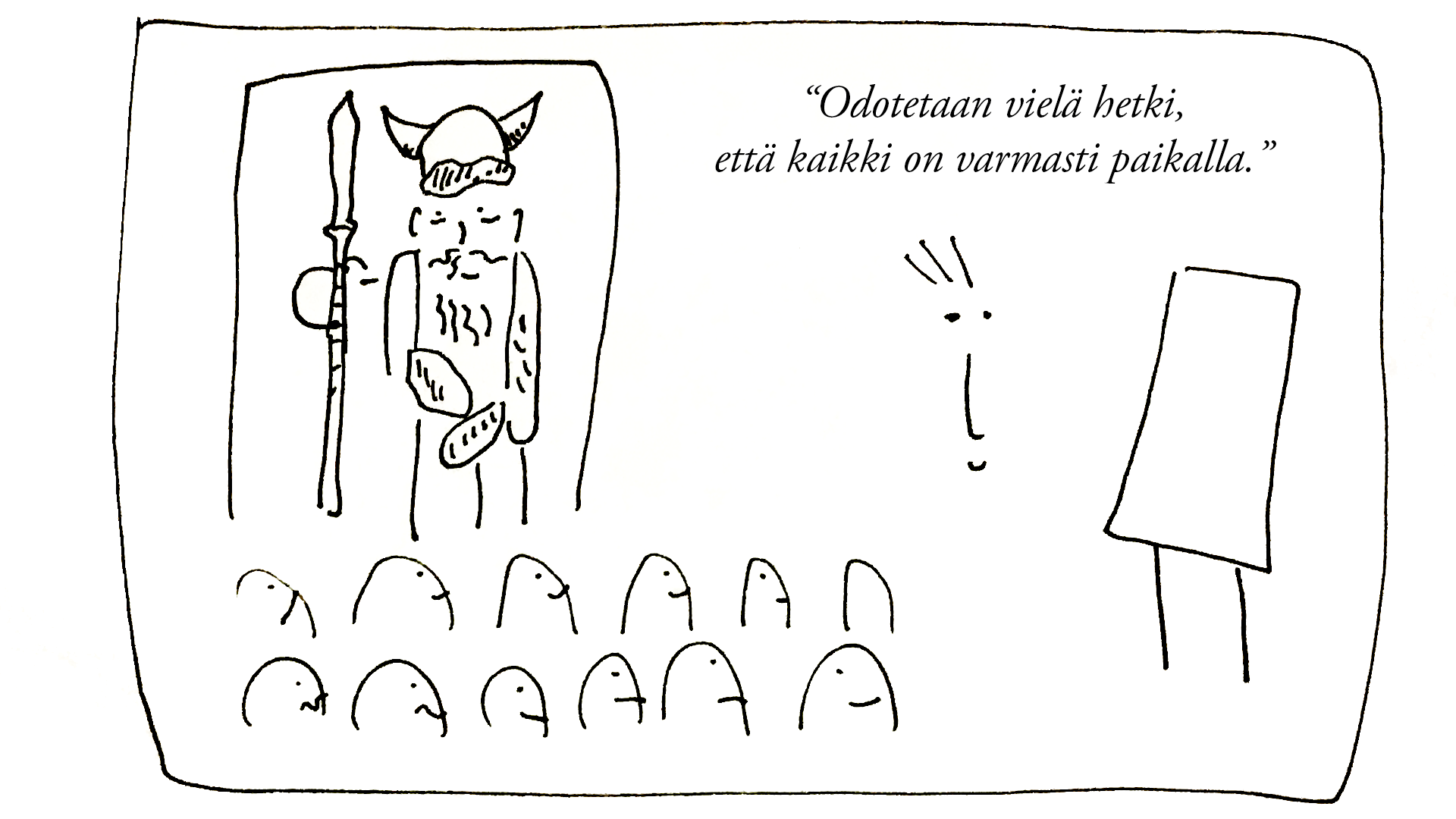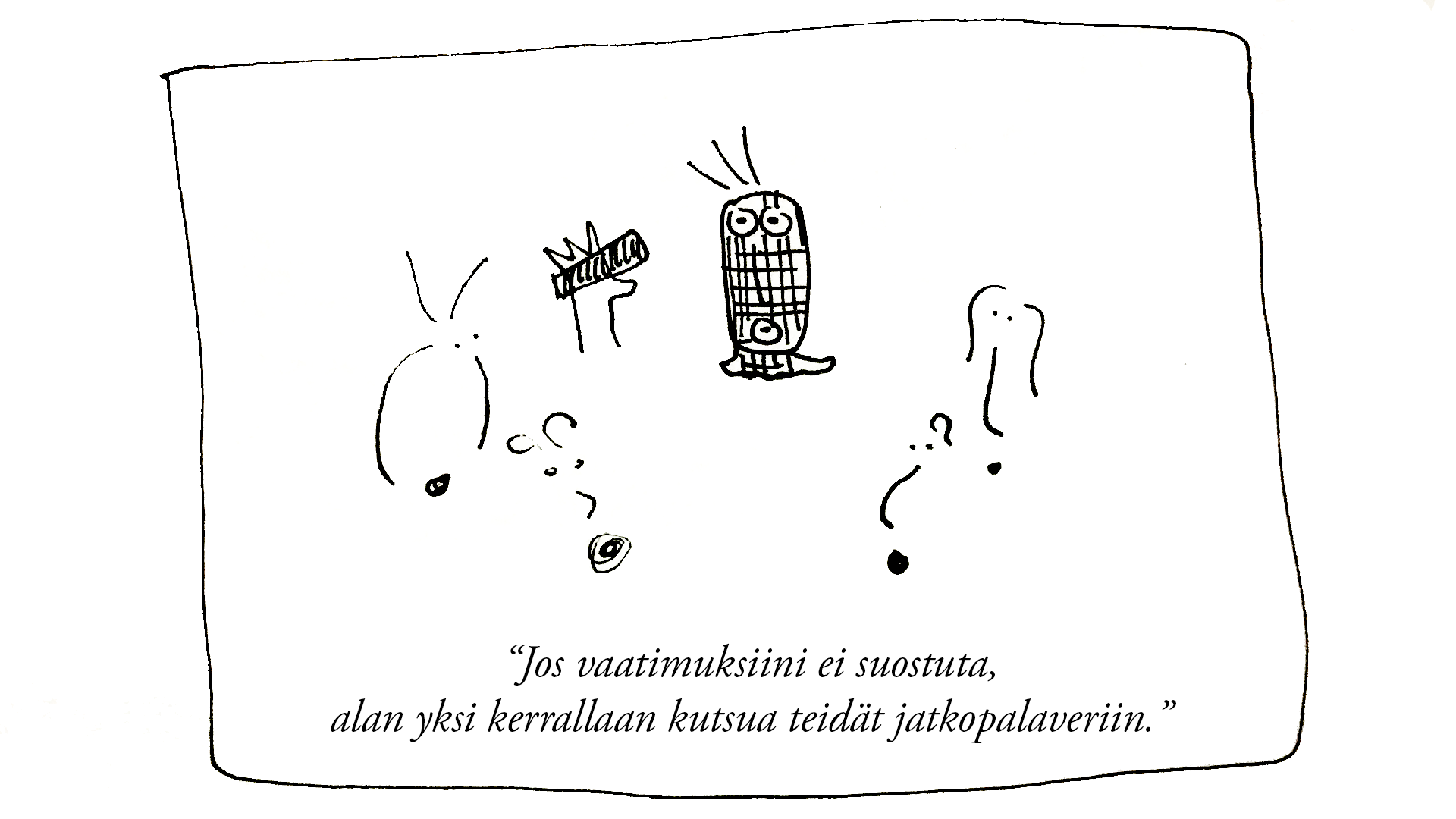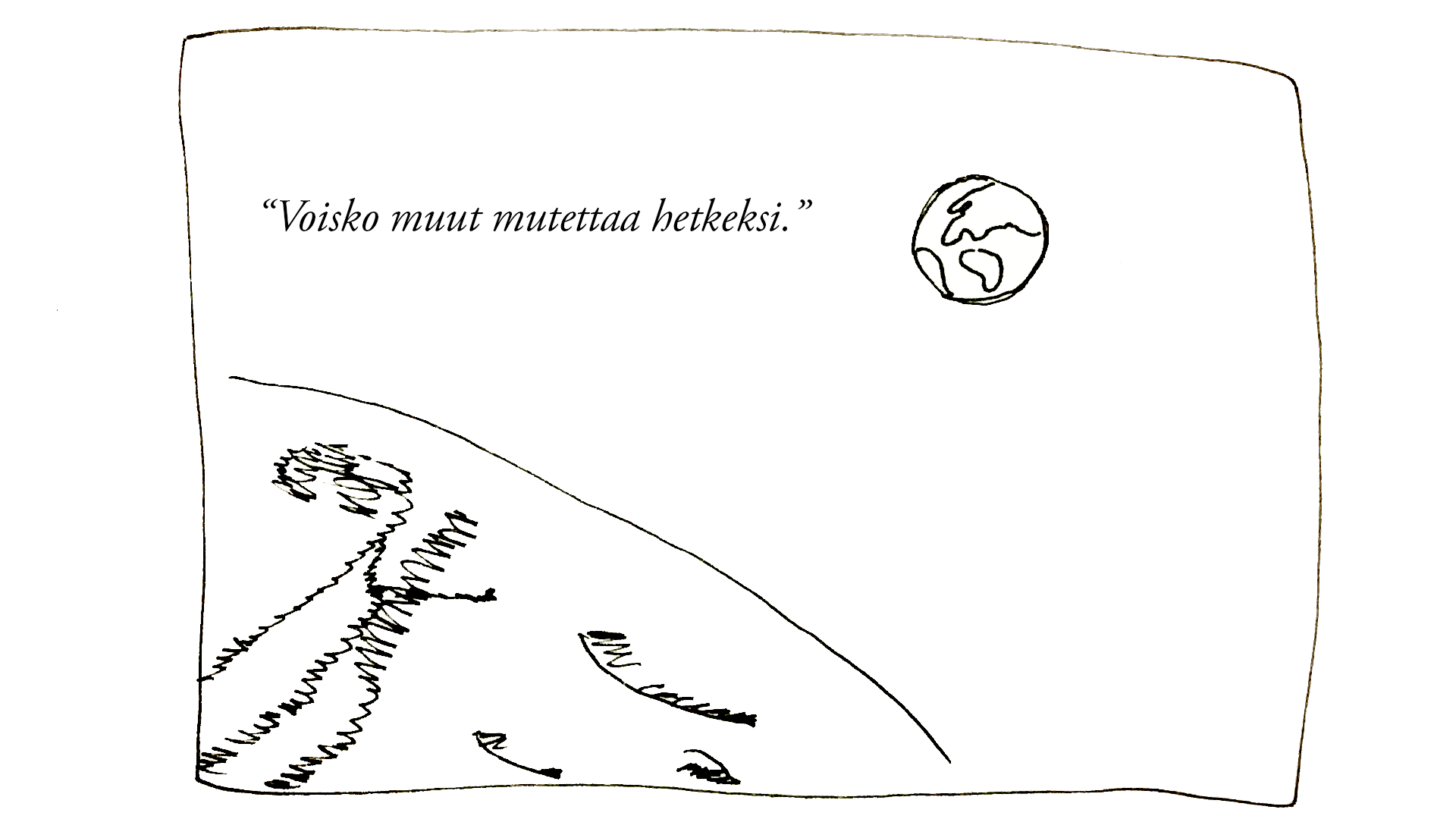Okay, hey, um… so glad everyone could make it today. We’re a pretty good sized group today. The A team, huh? Can you hear me in the back, by the way? Virtanen can put the phone away for a while, the farm can manage there for a while by itself. Who are we missing… Well, let’s wait a few more minutes.
A bad meeting is easier to describe than a good meeting. A bad meeting has a room full of people, half of whom don’t know what the meeting is about. The other half doesn’t even want to know.
You can tell a good meeting because it doesn’t even feel like a meeting. Here are six practical tips on how to make your meeting better. Try one or even all of them.
Okay, so on the agenda today is meetingy thingys. Are we all aligned? Virtanen? VIRTANEN?

A good meeting starts before the meeting
The best meetings are the ones you didn’t have to have at all. The second best is one that has been prepared in advance. Before sending a calendar invite, make sure you have done these:
1. Clarify the objective of the meeting
Take a deep breath, close your eyes and imagine an ideal post-meeting scenario. What does it look like?
You’re in your empowerment cave. On your computer screen is a document with five suggestions for sharpening internal communication and improving silo… sorry, inter-departmental communication. The proposals are ranked in descending order of feasibility.
Next, you can think about whether there is another way to achieve the ideal situation than a meeting. For example, by asking Laaksonen from HR to list five suggestions for improving internal communication. Preferably in descending order of feasibility.
However, if you insist on holding a meeting on the subject, please clarify the objective of the meeting in one paragraph. You can put it at the beginning of the meeting call:
Objective of the meeting
Review the crisis communication plan and decide which sections to update and who will update them
Objective of the meeting
Address the catastrophic degradation of the dust bag that comes up repeatedly in customer feedback and go through the necessary process changes that need to be made.
Don’t send a meeting invite until you have clarified its purpose for yourself. Be sure to also make it clear to the people invited to the meeting.
2. Invite only the people who are important to the success of the meeting
Luckily, we have smartphones nowadays, and we no longer have to look at the hairy neck of the person sitting in front of us on the bus and remember the time when Jake next door organised his ten-year birthday party, to which even that weird exchange student from Italy was invited, but you weren’t invited at all.
Your mother was right about many things, but as a rule you don’t need to invite all your friends to a meeting – not even the Italian exchange student. In fact, one of the prerequisites for a good meeting is that only the people who are important for its success are invited.

Before sending out a calendar invite, read through the objective of the meeting and think about who is needed to achieve it. Dustbag disaster manager Juntunen now at least… And… And… And…
Perhaps instead of organizing a meeting, you could send an email to Juntunen and ask him to take steps to prevent the dust bags from disintegrating. Preferably before 17 October, this year.
You can also try a brainstorming exercise where you invite as few people as possible to the meeting. If you get to zero, you’ve come out of the game a winner.
3. Book only the time you need for the meeting
I would be lying if I said that all meetings require 60 minutes plus 6.5 minutes of calling into the Zoom void: can you hear me, I hear you, can you… Next time, when you have done all the above and are ready to send out an invite for a meeting, allow only the time required for the meeting, for example 30 minutes.
Under Parkinson’s Law, work is extended to cover all the time allocated to it. According to Zoom’s law, the number of connection problems increases in proportion to the number of participants in the meeting. So just set aside the time you need to deal with it and test the connection before the meeting starts.
Remember also to respect others. There are two main ways to respect each other’s expertise in a workplace: don’t tell boomer jokes in a room with only one door, and don’t steal time by giving the meeting 7 minutes to run over.
A good meeting starts on time and ends even earlier
Before the video connection is up and running, Virtanen has already fed the cows, milked the green crystals and is now looking forward to building a new Japanese-style main building. HR’s Laaksonen is doing double duty by updating the crisis communications plan. The meeting starts with a group therapy session, missing only name tags and a joint clinical diagnosis. On one end of the call, consultant Wilkengaard’s smile has been frozen by either dreams of promotion or a single bar wifi connection.
In such a situation, the meeting leader has the responsibility to promise himself and others that he will never hold another meeting. Plastic spoons are often available in meeting rooms for blood pacts. Since the meeting has already begun, it must be completed properly. With these tips, you can do it.

4. Take time to go over the objective of the meeting
At the beginning of the meeting, it is a good idea to reiterate why the meeting has been organized and what it is intended to achieve. If it would have been useful to read more than the weekly menu for the meeting, you can even take the time to go through the main points of the material.
5. Give room for healthy conflict
As the convener and co-chair of the meeting, you have a big responsibility. Your role is to enable healthy conflict around the issue. Make sure that everyone in the meeting is on the same page for a moment, that everyone’s opinion counts and that everyone gets their point of view across. For example, try this mood-setter: “Let’s agree to save the comments for the end, because Pertti will decide in the end reh reh reh reh.”
Enabling healthy conflict is important. If there is no possibility of conflict, the meeting might not have been necessary at all. If everyone is already in agreement, time could have been used to move things forward. Or, if it doesn’t matter that someone disagrees, the time could have been used to make things happen.
Also remember that if you are the one who’s talking most of the meeting, it’s not a meeting, it’s a hostage situation.
6. Write down the main points and decisions of the meeting
You can tell a good meeting because it leaves a mark. In the soul, the heart and Confluence (or other internal tool).
Here are the outlines inside which you can color:
– Subject and date of the meeting
– The objective
– Who was there
– Decisions
– Who does what and by when
Here’s an example:
Planning meeting for the Summer Party on Mon 15.6.2020
– Increase cross-functional cohesion through communication outside the working day
– Virve, Mikko, Daniel, Tuikku and Pasi
– It was decided to cancel the Puolanka Summer Theatre’s jamboree presenting world cultures through humour and pantomime.
– Confirmed catering, band, venue and date
– Daniel: confirm reservations catering, band, venue by Tue 16.6.
– Tuikku: find out the availability of Club for Five or the other band by Wed 17.6.
Together towards better meetings
Hopefully these tips will help you organize better meetings. If you have any proven methods, please share them in the comments box.
Jukka Aalho is an Oulu-based marketer and cartoonist who spoke at TEDxOulu in January 2020 about measuring creativity and how to see big projects through to completion.





Leave a Reply